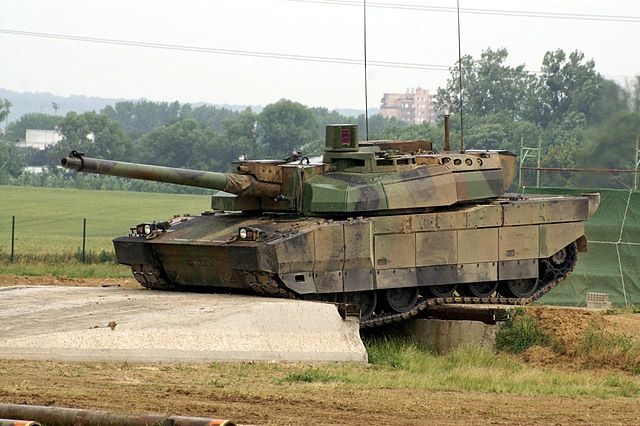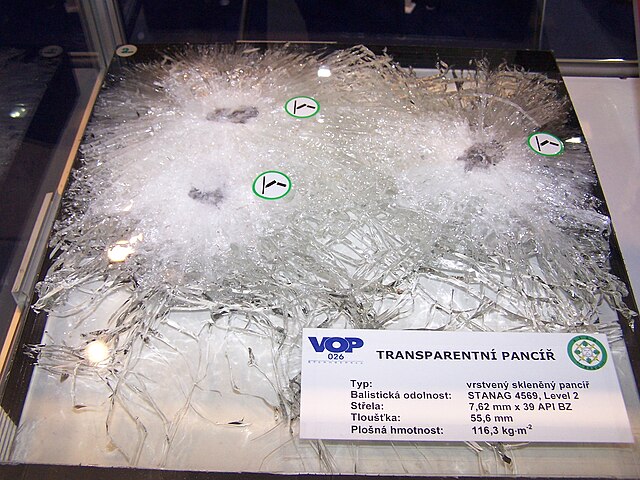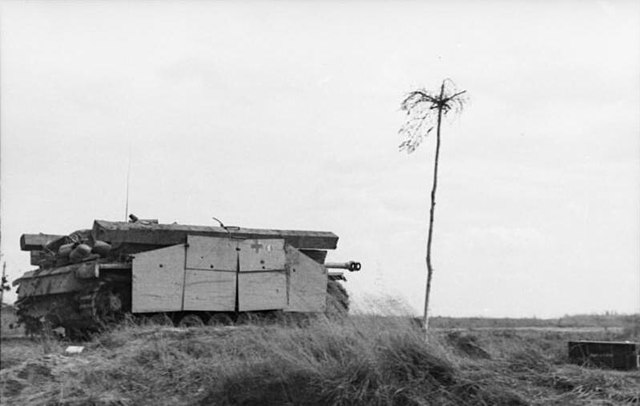Composite armour is a type of vehicle armour consisting of layers of different materials such as metals, plastics, ceramics or air. Most composite armours are lighter than their all-metal equivalent, but instead occupy a larger volume for the same resistance to penetration. It is possible to design composite armour stronger, lighter and less voluminous than traditional armour, but the cost is often prohibitively high, restricting its use to especially vulnerable parts of a vehicle. Its primary purpose is to help defeat high-explosive anti-tank (HEAT) projectiles.
The Soviet T-64 was the first mass-produced tank with composite armour
The Leclerc tank is equipped with NERA (Non-explosive reactive armour)
Plasan SandCat light (5t) military vehicle featuring integrated composite armoured body
The British Army's Challenger 2 main battle tank uses Chobham armour.
Military vehicles are commonly armoured to withstand the impact of shrapnel, bullets, shells, rockets, and missiles, protecting the personnel inside from enemy fire. Such vehicles include armoured fighting vehicles like tanks, aircraft, and ships.
The British Fox CVR(W) was built largely of aluminium.
Ballistic test of a bullet-resistant glass panel
Plasan Sand Cat light (5 ton) military vehicle featuring integrated composite armoured body
Sturmgeschütz III with spaced armour plates







